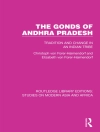Since unification, eastern Germany has witnessed a rapidly changing memorial landscape, as the fate of former socialist monuments has been hotly debated and new commemorative projects have met with fierce controversy. Memorializing the GDR provides the first in-depth study of this contested arena of public memory, investigating the individuals and groups devoted to the creation or destruction of memorials as well as their broader aesthetic, political, and historical contexts. Emphasizing the interrelationship of built environment, memory and identity, it brings to light the conflicting memories of recent German history, as well as the nuances of national and regional constructions of identity.
สารบัญ
List of Illustrations
Acknowledgements
List of Abbreviations and Key Terms
Introduction
Chapter 1. Memory, Monuments and Memorialization
Chapter 2. Socialist Icons: From Heroes to Villains?
Chapter 3. Soviet Special Camps: Reassessing a Repressed Past
Chapter 4. 17 June 1953 Uprisings: Remembering a Failed Revolution
Chapter 5. The Berlin Wall: Historical Document, Tourist Magnet or Urban Eyesore?
Chapter 6. Remembering the ‘Peaceful Revolution’ and German Unity
Conclusion: Beyond the Palimpset
Bibliography
Index
เกี่ยวกับผู้แต่ง
Anna Saunders is Professor of Modern Languages and Cultures in the School of Histories, Languages and Cultures at the University of Liverpool. Her publications include the monograph Honecker’s Children: Youth and Patriotism in Eastern Germany (2007) and the collection Remembering and Rethinking the GDR: Multiple Perspectives and Plural Authenticities (2013, coedited with Debbie Pinfold).












